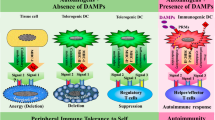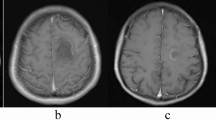Abstract
Incidentally identified anomalies within the CNS that are highly suggestive of demyelinating disease have been extensively described in neuropathological series, and are increasingly being detected during premortem investigations. With the exception of studies that focused specifically on the prevalence of this entity, the observed anomalies are unanticipated and unrelated to the intended purpose of the examination. The discovery of MRI technology, and its subsequent widespread adoption in the clinic, has facilitated the identification of such cases. The natural course of individuals with incidentally identified demyelinating anomalies is unknown at present. This Review focuses on the history and nosology of unexpected demyelinating pathology, encompassing both autopsy data and MRI-based antemortem investigations of large cohorts, as well as family members at high risk of developing multiple sclerosis. Longitudinal clinical data acquired from prospectively followed cohorts will also be reviewed. In addition, I discuss the estimated prevalence of demyelinating pathology, the currently proposed criteria for its identification, implications for therapeutic intervention, and predictors of disease progression.
Key Points
-
Incidentally identified demyelinating anomalies within the CNS that are highly suggestive of multiple sclerosis (MS) have been extensively described in neuropathological studies
-
The widespread utilization of MRI technology in medicine is facilitating the identification of individuals possessing premortem anomalies suggestive of MS
-
Longitudinal clinical data acquired from prospectively followed cohorts with suspected demyelinating anomalies affirm the importance of these observed radiological findings
-
The discovery of demyelinating pathology creates intersecting neuroethical, legal, social and practical medical management quandaries and is, therefore, of both immediate and long-term clinical relevance
-
Additional investigations are required to obtain a fuller understanding of the natural history of incidentally identified demyelinating anomalies so that guidelines for surveillance and treatment recommendations can be formulated
This is a preview of subscription content, access via your institution
Access options
Subscribe to this journal
Receive 12 print issues and online access
$189.00 per year
only $15.75 per issue
Buy this article
- Purchase on SpringerLink
- Instant access to full article PDF
Prices may be subject to local taxes which are calculated during checkout


Similar content being viewed by others
References
Vernooij, M. W. et al. Incidental findings on brain MRI in the general population. N. Engl. J. Med. 357, 1821–1828 (2007).
Weber, F. & Knopf, H. Incidental findings in magnetic resonance imaging of the brains of healthy young men. J. Neurol. Sci. 240, 81–84 (2006).
Okuda, D. T. et al. Incidental MRI anomalies suggestive of multiple sclerosis: the radiologically isolated syndrome. Neurology 72, 800–805 (2009).
Lebrun, C. et al. Unexpected multiple sclerosis: follow-up of 30 patients with magnetic resonance imaging and clinical conversion profile. J. Neurol. Neurosurg. Psychiatry 79, 195–198 (2008).
Miller, D. H. et al. Differential diagnosis of suspected multiple sclerosis: a consensus approach. Mult. Scler. 14, 1157–1174 (2008).
Miller, D. H. et al. Role of magnetic resonance imaging within diagnostic criteria for multiple sclerosis. Ann. Neurol. 56, 273–278 (2004).
Courville, C. B. Multiple sclerosis as an incidental complication of a disorder of lipid metabolism. I. Close resemblance of the lesions resulting from fat embolism to the plaques of multiple sclerosis. Bull. Los Angel. Neuro. Soc. 24, 60–76 (1959).
Georgi, W. Multiple sclerosis. Anatomopathological findings of multiple sclerosis in diseases not clinically diagnosed [German]. Schweiz. Med. Wochenschr. 91, 605–607 (1961).
Gilbert, J. J. & Sadler, M. Unsuspected multiple sclerosis. Arch. Neurol. 40, 533–536 (1983).
Engell, T. A clinical patho-anatomical study of clinically silent multiple sclerosis. Acta Neurol. Scand. 79, 428–430 (1989).
Mackay, R. P. & Hirano, A. Forms of benign multiple sclerosis. Report of two “clinically silent” cases discovered at autopsy. Arch. Neurol. 17, 588–600 (1967).
Morariu, M. & Klutzow, W. F. Subclinical multiple sclerosis. J. Neurol. 213, 71–76 (1976).
Phadke, J. G. & Best, P. V. Atypical and clinically silent multiple sclerosis: a report of 12 cases discovered unexpectedly at necropsy. J. Neurol. Neurosurg. Psychiatry 46, 414–420 (1983).
Barkhof, F. et al. Comparison of MRI criteria at first presentation to predict conversion to clinically definite multiple sclerosis. Brain 120, 2059–2069 (1997).
Compston, A. & Coles, A. Multiple sclerosis. Lancet 359, 1221–1231 (2002).
McFarland, H. F. et al. Studies of multiple sclerosis in twins, using nuclear magnetic resonance. Neurology 35 (Suppl. 1), 137 (1985).
Ebers, G. C. et al. A population-based study of multiple sclerosis in twins. N. Engl. J. Med. 315, 1638–1642 (1986).
Kinnunen, E. et al. Genetic susceptibility to multiple sclerosis. A co-twin study of a nationwide series. Arch. Neurol. 45, 1108–1111 (1988).
Lynch, S. G., Rose, J. W., Smoker, W. & Petajan, J. H. MRI in familial multiple sclerosis. Neurology 40, 900–903 (1990).
Tienari, P. J., Salonen, O., Wikstrom, J., Valanne, L. & Palo, J. Familial multiple sclerosis: MRI findings in clinically affected and unaffected siblings. J. Neurol. Neurosurg. Psychiatry 55, 883–886 (1992).
[No authors listed] Multiple sclerosis in 54 twinships: concordance rate is independent of zygosity. French Research Group on Multiple Sclerosis. Ann. Neurol. 32, 724–727 (1992).
Paty, D. W. et al. MRI in the diagnosis of MS: a prospective study with comparison of clinical evaluation, evoked potentials, oligoclonal banding, and CT. Neurology 38, 180–185 (1988).
Sadovnick, A. D. et al. A population-based study of multiple sclerosis in twins: update. Ann. Neurol. 33, 281–285 (1993).
Fazekas, F. et al. Criteria for an increased specificity of MRI interpretation in elderly subjects with suspected multiple sclerosis. Neurology 38, 1822–1825 (1988).
Thorpe, J. W. et al. British Isles survey of multiple sclerosis in twins: MRI. J. Neurol. Neurosurg. Psychiatry 57, 491–496 (1994).
De Stefano, N. et al. Imaging brain damage in first-degree relatives of sporadic and familial multiple sclerosis. Ann. Neurol. 59, 634–639 (2006).
McDonnell, G. V., Cabrera-Gomez, J., Calne, D. B., Li, D. K. & Oger, J. Clinical presentation of primary progressive multiple sclerosis 10 years after the incidental finding of typical magnetic resonance imaging brain lesions: the subclinical stage of primary progressive multiple sclerosis may last 10 years. Mult. Scler. 9, 204–209 (2003).
Tintore, M. et al. Isolated demyelinating syndromes: comparison of different MR imaging criteria to predict conversion to clinically definite multiple sclerosis. AJNR Am. J. Neuroradiol. 21, 702–706 (2000).
Lebrun, C. et al. Association between clinical conversion to multiple sclerosis in radiologically isolated syndrome and magnetic resonance imaging, cerebrospinal fluid, and visual evoked potential: follow-up of 70 patients. Arch. Neurol. 66, 841–846 (2009).
Sadovnick, A. D. et al. Factors influencing sib risks for multiple sclerosis. Clin. Genet. 58, 431–435 (2000).
Fisniku, L. K. et al. Disability and T2 MRI lesions: a 20-year follow-up of patients with relapse onset of multiple sclerosis. Brain 131, 808–817 (2008).
Goodin, D. S. Magnetic resonance imaging as a surrogate outcome measure of disability in multiple sclerosis: have we been overly harsh in our assessment? Ann. Neurol. 59, 597–605 (2006).
De Groot, C. J. et al. Post-mortem MRI-guided sampling of multiple sclerosis brain lesions: increased yield of active demyelinating and (p)reactive lesions. Brain 124, 1635–1645 (2001).
Trapp, B. D. et al. Axonal transection in the lesions of multiple sclerosis. N. Engl. J. Med. 338, 278–285 (1998).
Author information
Authors and Affiliations
Corresponding author
Ethics declarations
Competing interests
The author declares no competing financial interests.
Rights and permissions
About this article
Cite this article
Okuda, D. Unanticipated demyelinating pathology of the CNS. Nat Rev Neurol 5, 591–597 (2009). https://doi.org/10.1038/nrneurol.2009.157
Published:
Issue date:
DOI: https://doi.org/10.1038/nrneurol.2009.157
This article is cited by
-
The radiologically isolated syndrome: take action when the unexpected is uncovered?
Journal of Neurology (2010)



